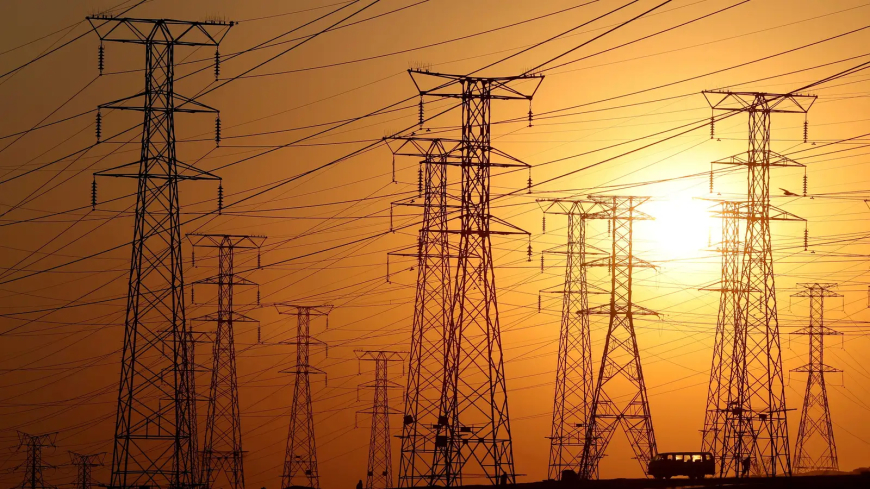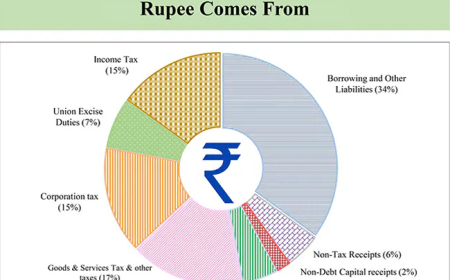
India’s energy crisis is a pressing issue that has far-reaching consequences for its economic development and quality of life. With demand consistently outpacing supply, particularly during peak seasons, the country has experienced widespread power outages, contributing to challenges in industries, education, healthcare, and everyday life. While the government has attempted to address this crisis through public sector initiatives and regulatory frameworks, the continued strain on power grids suggests that these measures have not been as effective as hoped.
A Libertarian Approach to the energy crisis calls for a fundamental shift toward market-driven solutions, privatization of energy sectors, renewable energy incentives, and a reduction in government control. Let's explore how these principles, implemented successfully in other parts of the world, could provide a more sustainable and efficient solution to India’s energy woes.
The Case for Privatization
/GettyImages-1280884799-d1b47a25538c4cbda1346fddceaae028.jpg)
The government-run energy sector in India faces numerous challenges, including inefficiency, corruption, and a lack of innovation. Libertarians believe that privatizing key industries, including energy, would introduce competition, improve efficiency, and reduce the burden on taxpayers. The example of Chile’s privatization of its energy sector in the 1980s offers valuable insights.
Chile, which once relied on state-owned utilities, transitioned to a largely privatized energy market. This move spurred competition, improved service quality, and resulted in lower energy prices for consumers. Additionally, private energy companies were incentivized to invest in renewable energy and improve infrastructure, which enhanced energy security. A similar approach in India could help ease the pressure on the national grid by fostering competition and innovation within the energy sector.
Market-Driven Renewable Energy Incentives

India’s energy sector is highly dependent on fossil fuels, contributing to environmental pollution and geopolitical vulnerabilities. A libertarian approach encourages the development of market-driven solutions to incentivize the adoption of renewable energy. Instead of state-imposed mandates, the focus would be on creating a system where consumers and businesses are motivated to adopt clean energy through tax incentives, subsidies, and a competitive market for green energy solutions.
The success of Germany’s Energiewende (Energy Transition) is a case in point. Germany's government incentivized private companies to invest in renewable energy through a combination of feed-in tariffs and renewable energy certificates. By making the transition to renewables profitable for both consumers and producers, the market-driven model helped Germany become a global leader in wind and solar power, even as it moved away from coal and nuclear energy. India could benefit from similar policies that stimulate private investment in solar and wind energy.
Reducing Government Control

A significant issue with India’s energy crisis is the over-regulation of the sector. Public-sector monopolies often create inefficiencies, delay infrastructure projects, and reduce the availability of energy. Libertarians argue that reducing government control would allow private companies to enter the market, offering diverse solutions to meet the growing demand for electricity.
One notable example comes from the liberalization of the electricity market in the United States, particularly in states like Texas. The state of Texas deregulated its energy market in the 1990s, leading to the creation of a competitive market where consumers could choose their electricity providers. This system allowed for innovation in energy sourcing, efficiency technologies, and customer service, significantly improving energy access and reducing costs. In a similar manner, India could benefit from market liberalization by encouraging competition, fostering innovation, and providing consumers with more control over their energy choices.
Showcase of Libertarian Approaches in Action

1. The UK’s Electricity Market Reform (EMR) In the UK, the introduction of market-based solutions like Capacity Mechanism and Contracts for Difference (CFD) helped encourage private investment in energy infrastructure, while also reducing the government’s direct involvement in energy generation. This shift has led to cleaner energy options being more competitive against fossil fuels and a steady reduction in carbon emissions. A similar mechanism in India could revitalize its power grid and ensure more sustainable energy production.
2. The Success of Energy Cooperatives in the US In the United States, energy cooperatives are a popular form of decentralized, market-driven energy management. Local communities band together to generate their own renewable energy, reducing reliance on the national grid. These cooperatives have proved particularly effective in rural areas, providing reliable, sustainable power at lower costs than government-run utilities. A cooperative model could be a game-changer for India, where rural regions often struggle with energy shortages.
Conclusion: Power to the People
India’s energy crisis requires a fresh approach—one that removes the inefficiencies of state control and embraces market-based, innovative solutions. By privatizing the energy sector, offering incentives for renewable energy adoption, and reducing government intervention, India can move towards a more sustainable, efficient, and resilient energy system. The examples from Chile, Germany, and Texas highlight the potential of libertarian principles in driving energy sector reforms, demonstrating that when the government steps back, the people can step forward with solutions that benefit everyone.
Ultimately, by empowering the market and individuals, India could resolve its energy crisis, reduce power shortages, and pave the way for a greener, more sustainable future.
















































/GettyImages-1280884799-d1b47a25538c4cbda1346fddceaae028.jpg)









